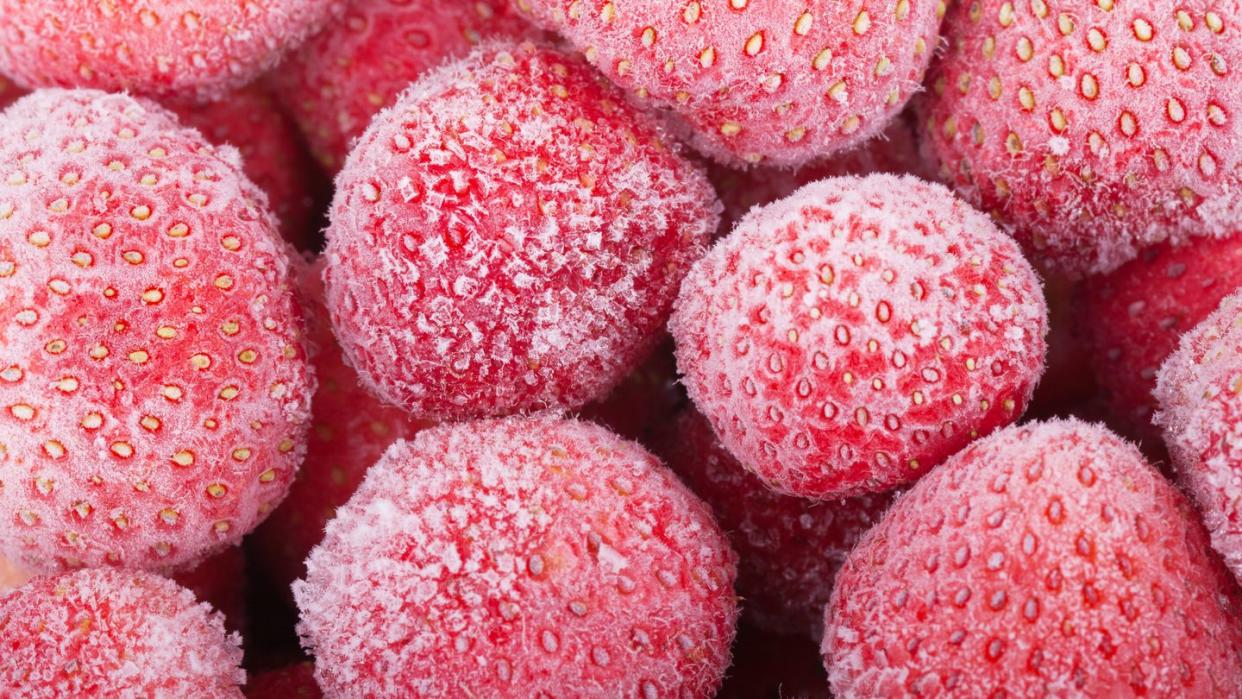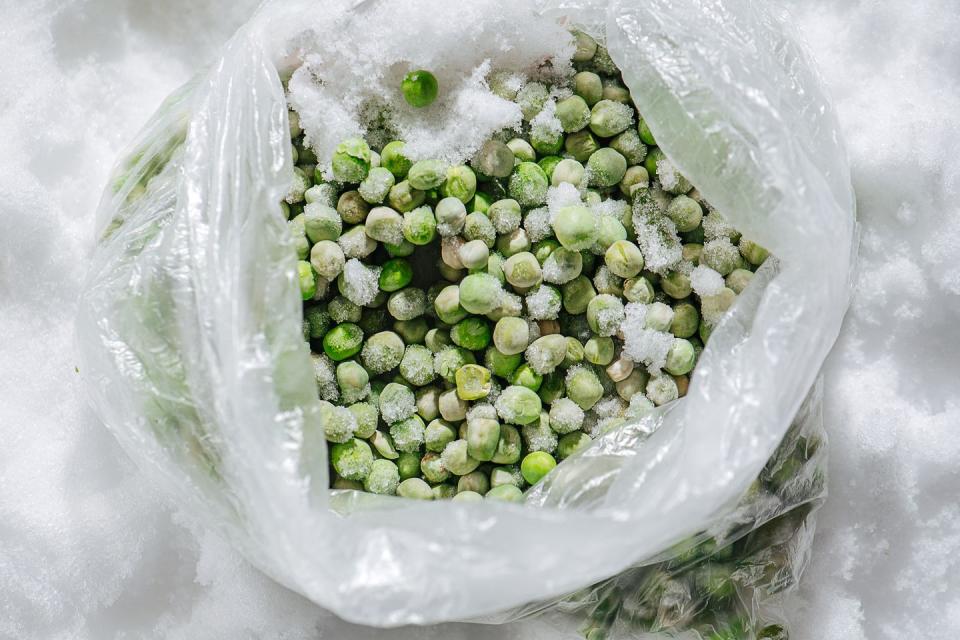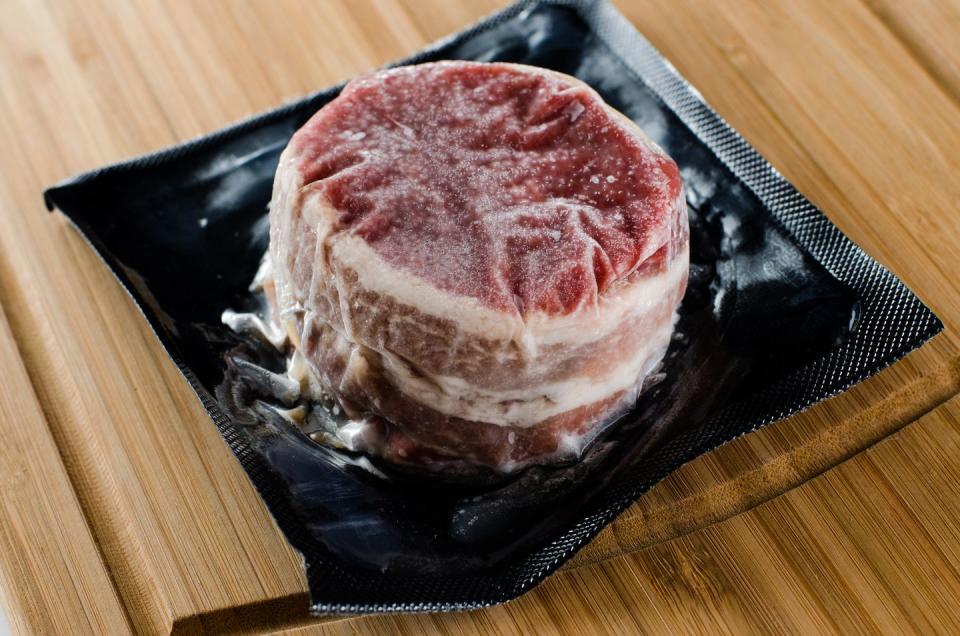This Is What Freezer Burn Actually Does To Your Food

"Hearst Magazines and Yahoo may earn commission or revenue on some items through these links."
The freezer is one of your kitchen’s most important appliances. It’s where we store our favorite Trader Joe’s meals, keep plenty of pints of ice cream, and save leftovers for a rainy day. But our hopes of enjoying frozen food are too often dashed by a layer of ice.
Freezer burn plagues our frozen food, leaving behind a musty flavor and even discolors meat long after it’s defrosted. It has the unique ability to dampen any dinner—but is it dangerous? Should we worry about eating food with freezer burn? We’re breaking down everything you need to know about freezer burn how it affects food safety.
Is It Safe To Eat Food With Freezer Burn?

Barring any other external factors, freezer burnt food should be safe to eat. The scientific process that creates the ice crystals, known as sublimation, draws out the moisture from your food and refreezes it on the surface.
Freezer burn increases the likelihood of oxidative reactions that deteriorates the quality of your food. It’s similar to what you experience with rancid oil or butter. But while it certainly makes your food taste gross, it’s not inherently harmful to your health.
That doesn’t mean you should use this information as carte blanche to eat any food in the back of your freezer that's covered in freezer burn. Storing at subzero temperatures extends the lifespan of your food, but it doesn’t stay good indefinitely.
The FDA has a guide for how long you can safely store food in the freezer, and it’s not as long as you’d think. Most raw and cooked ingredients only stay good for a few months at most. So make sure to use the food in your freezer before it’s too late.
How Do You Avoid Freezer Burn?

Certain foods are more susceptible to developing freezer burn. As a general rule of thumb: the more natural moisture something has, the more likely it will end up covered in ice crystals. Fruits, leftover soups and sauces, and meat are all at high risk for freezer burn.
The best way to prevent it from happening is optimizing the way you store your food. The key is removing as much air as you can, because exposure to oxygen causes the oxidative reactions that make your food taste funky.
If you’re using a resealable plastic bag, that means taking the time to press the excess air bubbles out before sealing the bag shut. For rigid containers (like ice cream cartons, for example), covering the surface of your food with a layer of plastic wrap helps keep at least some of the freezer burn at bay.
The most effective technique, however, requires a bit of special equipment. Vacuum sealers ensure that your food is safe from freezer burn. It’s certainly an investment, but it’s well worth the cost if you regularly freeze your food. Want some product recommendations? Check out our favorite vacuum sealers.
You Might Also Like

